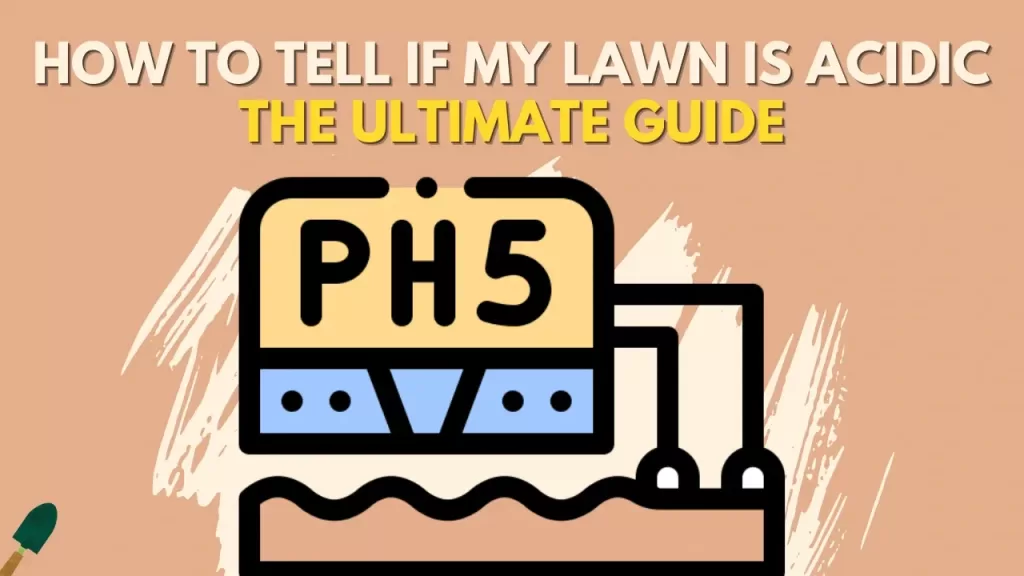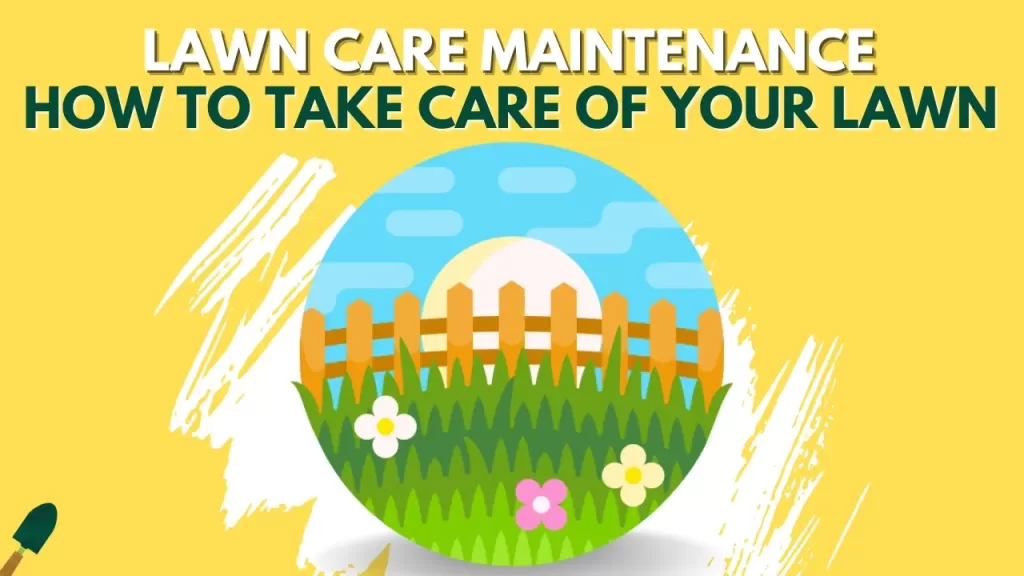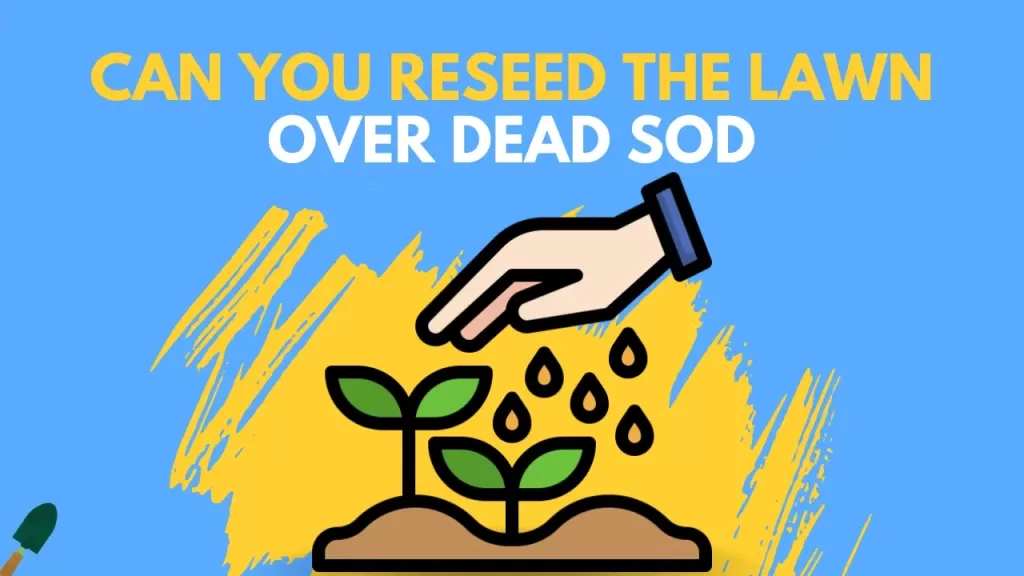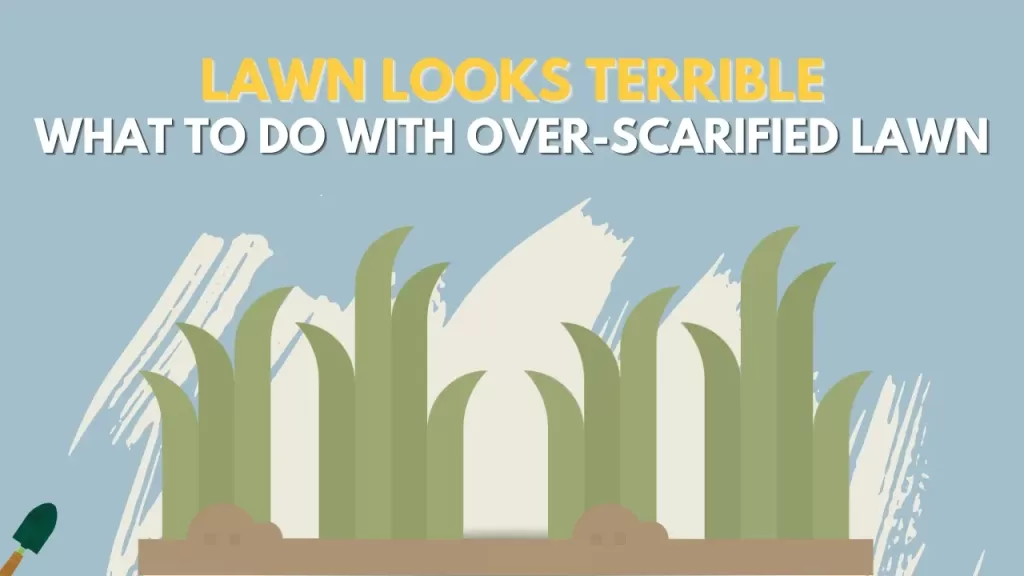Everyone wants their lawn to look lush green and beautiful and we want to do everything we can so that we can accomplish that goal. We do proper irrigation, timely fertilization, and whatnot. But sometimes little things can ruin your whole lawn.
Today we are going to talk about one of these little things which is lawn acidity or lime deficiency.
If you are seeing lots of weeds growing in your lawn, the grass is turning from green to yellow and becoming thinner and thinner, the fertilizer you are applying is not working, and insects are building up in the soil and grass, then the lawn has lime deficiency and by seeing these signs you can tell that your lawn is acidic and needs lime.
Let’s dive deeper into these signs and determine if your lawn is acidic or not and what you can do about it.
Things that can tell your lawn is acidic
- Nothing happens after fertilization – The first thing you do when you see that your lawn is not growing and becoming thin and yellow, you put fertilizer on it but the lawn isn’t growing, what do you do? You put a second application of fertilizer but the grasses are still the same.
In this case, the sign is clear: your lawn is acidic and can’t access all the nutrients you are providing to it in the form of fertilizer. Overfertilization also makes the lawn more acidic. So when fertilizers don’t work, it’s a sign that you need to put some lime on them.
- Insects and pests – If you are seeing insects attack your lawn then it is a sign that something is not right in your lawn. A healthy lawn can repel insects and pests with the help of nutrients. If your lawn isn’t putting up the fight against the insects then it is because it has become acidic and can’t access nutrients from the soil. You need to put the lime in your lawn to restore all the nutrients and make it repel insects and become healthier in the process.
- Stressed out in the heat – A healthy lawn can survive the summer heat and drought and can bounce back after it. But if you see that your lawn is stressing out in the heat and not growing after the drought period is ended, then it is a clear sign that your lawn has a low pH balance and is becoming acidic because grass needs a little boost after this period to recover and thrive but acidic soil blocks the access of nutrients to the grass and threatens your lawn to become thin and ugly.
- Yellow grass – A good lawn has a pH between 6 to 7, which is very essential for grasses to thrive and grow quickly. If the pH level goes below 5.5 then the lawn is considered to be acidic and the grass cannot extract essential nutrients from the soil and start turning from green to yellow. If you are seeing your grass dying in patches and not showing improvement despite putting proper fertilization then you need to add lime to your lawn.
Soil becomes more and more acidic over time due to natural processes like grass taking up all the nutrients or the runoff of minerals due to heavy rainfall etc. Putting certain kinds of fertilizers also makes the soil acidic and needs the application of lime every 2-3 years.
- Weeds – Weeds are known to thrive in acidic lawns and If you are seeing your lawn full of weeds then it’s a sign that your lawn is becoming acidic.
When a lawn becomes acidic then it loses the strength and capabilities to fight against the weeds like crabgrass, which can then take up your lawn in no time. Dandelions are another common weed you can find in your lawn if it’s becoming acidic. so If you are seeing more and more weeds in your lawn then you should put some lime on it.
- Moss – Similar to weeds, moss also loves acidic soil. Moses grows and develops in shaded areas, so if you see Moses under trees or any other shaded region of your lawn, then it’s a sign that your lawn is becoming acidic and you should put some lime in your lawn.
- Soil type – Soil is also a factor in seeing if your lawn is acidic or not. Some soils are naturally more acidic than others. Clay soils are one of the soils which tend to be more acidic and need lime application every year or two. Sandy soil promotes runoffs that can decrease the balance of essential nutrients and decrease the pH level of the soil. If your lawn consists of one of these soil then you need to put a check on your lawn’s acidity and make sure your lawn is not below the pH level of 6.
- Heavy rainfall – Heavy rainfall is also a factor that can make your lawn acidic. If a lawn faces heavy rainfall it can run off of essential nutrients and minerals like calcium and magnesium which then make your lawn more acidic. Runoff is a common thing to every lawn in heavy rain areas, so if you are in one of these areas then you need to check your lawn acidity every 1-2 years and introduce lime according to the result.
If you are seeing one or more of the signs from above then you should make an effort to test your soil for acidity and find out where your lawn currently stands. Applying lime will ensure that you have taken a step in the right direction and make your lawn beautiful and healthy.
What pH level is good for my lawn
After you have done the testing for the pH level of your soil, how would you decide what is the best pH level that you should maintain in your lawn? Different grasses prefer different levels of pH balance in your soil. Kentucky bluegrass for example prefers a pH level between 6.0 to 7.0, so if you are growing Kentucky grass in your lawn then you should maintain a pH level between 6.0 to 7.0. On the other hand, fescue grass prefers an acidic lawn where the pH level can range between 5 to 5.5, these kinds of lawns are acidic and can cause grasses to die but are fine for fescue grass.
A rule of thumb for maintaining the pH balance for your lawn which every lawn enthusiast follows is to keep your lawn pH close to 7 and make your grasses access to the nutrients efficiently.
One thing to keep in mind is that a high level of pH is also bad for your lawn and can make your lawn alkaline which can also make some serious issues to the lawn.
How to test your soil
The best way to know about your lawn soil is to test it. There are two ways you can test your lawn soil.
- Do it yourself kit
- Lab test
Let’s talk about both of them in detail:
Do it yourself kit – A basic DIY kit shows you about the soil’s acidity and alkalinity. So you just need to buy a testing kit from a nursery or amazon and you are good to go. Follow the instructions written on the kit properly and you will know about acidity in your soil in 15 to 20 minutes. Remember that these kits give you only a rough estimate of the pH of your soil and not an accurate result.
Have a lab test – Having a complete soil test is a good way to know all about your lawn soil. From its pH level to what nutrients it has and in what quantity is very helpful for you to maintain your lawn and provide it with better fertilizer and nutrients that it needs.
What to do if your lawn is acidic
If you find your lawn to be acidic and want to neutralize it, apply lime to the soil. Lime restores the pH level of the soil and brings it back to the optimal level for your lawn to become healthy and beautiful. Fall and spring is the best time for applying lawn as it takes time for the lime to break down and restore the pH level of the soil.
What is lime?
Lime is a component that is mined from underneath the earth and It is made from pulverized limestone. It mainly consists of two things, the first one is calcium and the other magnesium which reduces soil acidity in the soil. These lime extracts are non-toxic to the environment and are used for many agricultural practices.
There are two types of lime used in lawn
Calcite lime- which is considered to be a standard for every lawn to decrease acidity because it contains high amounts of calcium.
Dolomite lime – this type of lime is also used to reduce lawn acidity but it contains much higher levels of magnesium, so if the lawn has magnesium deficiency then this lime is preferred by the keeper.
You can use any one of these two as they will both reduce soil acidity and make your lawn healthy and beautiful. It’s always recommended to go for the most cost-effective options as they will be sufficient for a lawn.





